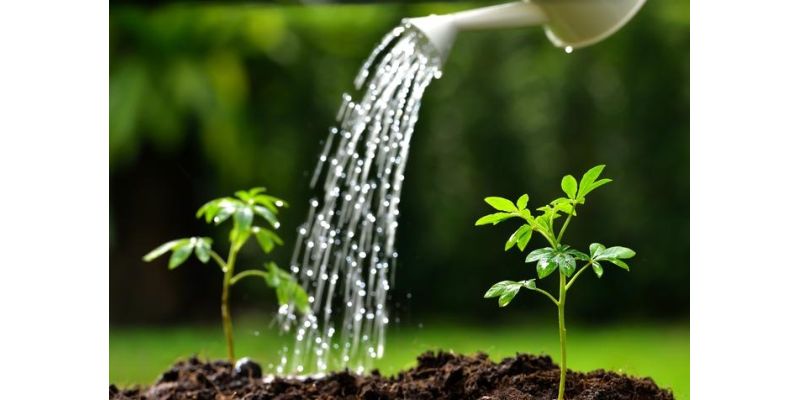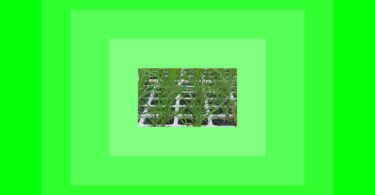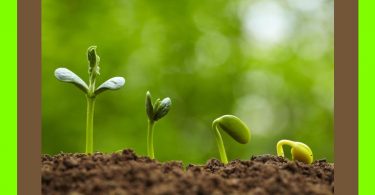Radko Tichavsky is a Czech born Mexican Agrohomeopath. He is a co-founder and director of Instituto Comenius in Mexico and author of Handbook of Agrohomeopathy, 2007 (Spanish) and Homeopathy for Plants, 2009 (Spanish) and creator and teacher of Holohomeopathy.
Agrohomeopathy Course!
Radko Tichavskyi is now offering a one semester virtual course in Agrohomeopathy (in English). You can learn how to define and analyze holons and how to repertorize the specific homeopathic treatment beyond just disease or pest names. You can find out more here: www.icomenius.edu.mx
A Materia Medica and Repertory for Plants: Mark Moodie hosts the website “Considera”, which provides a growing M.M and Repertory for plants and discusses resources for biodynamics and Agrohomeopathy .The website allows the world community to contribute their experiences in planting.
Good evening Dr. Tichavsky,
I’m looking for a list of metabolites related to Cymbidium orchids: Dendrobium nobile, Phalenopsis, Brassocattleya and Paphiopedilum Henryanum in relation to the most important homeopathic remedies for fungal infections and so I can give specific remedies for the individual plant species.
Thank you
Roberto Migliorelli – Rome, Italy
Radko Tichavsky:
Dear Roberto,
The answer to your question is somewhat complex since orchids are a relatively little studied group in holohomeopathy and present an unusual variability and plasticity among plants expressing the C3, C4 and CAM physiology. The answers to your questions are mainly among the mycorhizic fungi. The orchids are one of the examples of how it is important to maintain a holistic point of view in the repertorizations. The orchids themselves contain few antifungal metabolites and on the contrary contain even some metabolites such as orchinol whose objective is to attract “friendly” fungi as a strategy to defend themselves against other pathogenic fungi. The Hahnemann phrase Simila similibus curantibur applies here: the best defense against pathogenic fungi are: other fungi. The orchids base their defense strategy against fungi in the combination of their own metabolites, metabolites of ectomycorrhizal host plant and ectomycorrhizal fungi.
As regards to the Dendrobium nobile, the fungi of importance for the preparation of homeopathic preparations are mainly Clonostachys rosea and Trichoderma chlorosporum, and also Xylaria spp., Phomopsis spp., Mycena spp., Tulasnella spp., Sebacina spp. and Cantharella spp. For the Phalaenopsis, the Rhizocnonia solani is the constitutive remedy.
With Paphiopedium spp. (terrestrial orchids) the importance of mycorrhizal fungi and forest trees is even greater, in this case the constitutional remedy is Tulasnella calospora, but this orchid also maintains a great metabolic similarity with other orchids of the genus Cynorkis sp. and this at the same time has metabolic similarity with Cattleya sp. As for Brassocatleya, an intergeneric orchid hybrid derived from the Brassavola and Cattleya genera, the answer here is even more difficult since the plants have a high degree of epigenetic plasticity and sometimes express vital behavior of one or the other of the origins of their hybridation. It would be necessary to observe the plants and repertorize live on the detailed symptomatology of the plants to find homeopathic the remedy.
Dear Mr. Tichavsky,
I live in Vidharb region, Maharashtra state India. I am student of homoeopathy. On my farm I grow a citrus crop called Mosambi. Its other name is Sweet Lime. It is found mostly in south-east Asia. These small plants may reach up to 25 feet in height. Some of my plants have developed yellow leaves that become dry. The plants are about five years old. Nearby farms grow Cotton, Soy Bean, Garam, etc. At present it is winter here but this region is hot in the summer.
Thank you
Nakul
Radko Tichavsky:
Dear Nakul,
The yellowing of leaves in citrus is a quite ambiguous symptom. As a good homeopath you know about the importance of detailed observation. For example, if the yellowing happens first in the old leaves (it could be a lack of mobile nutrients like N, P, K for example) or if it appears first in the new leaves (it could be a lack of immobile nutrients Fe, Zn, Cu, Ca, B, Mo). Secondly, you have to observe the form of yellowing and whether it happens in oval shapes, or if it has a halo species around it, or it starts from the margins of the leaves or the tip of the leaf, and you also have to observe the patterns that develops in the leaf, if they are symmetrical or asymmetrical (in this case it could be HLB), if they include or not the leaf veins and also include observations on how the plants respond to irrigation (whether it is aggravating or not in relation to the symptoms). A good amount of holohomeopathic observation includes the spontaneous plants that grow around and the incidence of insects that in many cases are bioindicators of symptomatology in the holon. The more specific you are in your observations and if you can include photographs of the type of yellowing that occurs, the more possibility of help from me you will have.
Dear Mr. Tichavsky,
I live in Peoria, Illinois (zip code 61611) where we have stink bugs and now the lovely brown marmorated stink bugs as well. Last year they attacked not only my squash and cucumbers, but peppers, tomatoes and anything they could get their hands on! What can I do next year to prevent these pests in my vegetable garden? And if prevention fails and they still end up feasting on my vegetables, what do I do then? Thanks for your advice!
Daphne
Radko Tichavsky:
Dear Daphne,
You must lower the amount of nitrogen in the soil (excess nitrogen is the main attractor of Stink bugs.) You can plant near mustard, millet, buckwheat, sorghum, sunflower, marigolds, lavender and chrysanthemums that are good attractors of the Stink bugs and they will prefer eating these plants instead of the cucurbits and sollanaceas that you are growing. Maintaining good mulching in your crops helps the presence of entomopathogenic fungi such as Aspergillus spp. for example, naturally present in the soil and above all, you have to help the multiplication of spiders in your garden, as they are the main natural enemies of stink bugs. (A good mulching is a natural refuge for the correct multiplication of spiders that your crop requires). You can apply bionosode of soil 6 CH, preparing the mother tincture in water and applying by spray. You can also use Allium sativum 6 CH with olive oil as coadjuvant, Lactrodectus mactans 6 CH, or Loxosceles laeta 6 CH, also Coccinella septempunctata 6 CH works very well.
Mr. Tichavsky Sir,
I am from Kerala, India. My rose plants have brown rot. Can you make a suggestion?
Thank you
Abdul
Radko Tichavsky:
Dear Abdul,
The Brown Rot in rose plantations, caused by the gram-negative bacterium Ralstonia solanaceum can be controlled by several homeopathic remedies: Ginkgo biloba and Eucalyptus globosus, both remedies at low potencies and elaborated from leaves of the Trees in low potency (6-12 CH) . This bacterium is extremely resistant (and is transmitted by water where it can survive for more than 40 years) and is introduced through small wounds (for example, those caused by insects or by pruning). Contact and closeness to Solanaceae plants, such as potato (Solanum tuberosum), should be avoided as much as possible. Also, tomato (Lycopersicum esculentum), egg plant (Solanum melongena), tobacco (Nicotiana tabacum); pepper (Capsicum spp.); but also the banana, (Musa spp); geranium (Pelargonium); ginger (Zingiber officinale); olive (Olea europaea); and soybean (Glycine max) which are crops recognized as frequent hosts of the bacteria. In addition it is very important to make sure to use clean vegetative material of the bacteria and rigorously disinfect the cutting instruments. It is also important to maintain good control over the aphids and other sucking insects or cutters in the roses that are frequent vectors of the bacteria.






Good morning,
I live in Texas and have a blueberry farm of 7,300 plants. I do not use any chemical herbicides or pesticides. They are fed pond water and fish emulsion fertilizer through an injection system. Some plants die without cause. Some plants get antracnose on the leaves. Can you tell me how to take care of them to keep them healthy and grow bigger and produce more berries. I also have bee hives on the property. Also, I would like to take your course in English and online if one is available. I am also willing to travel if necessary. I want the best for my plants. I have a 70 acre farm that is heavily landscaped with plants and I want to keep them healthy too.